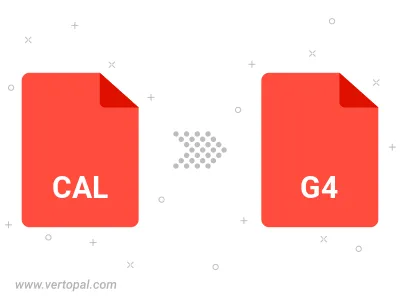Convert CAL to G4
Convert CAL images to G4 format, edit and optimize images online and free.

The CAL file extension, known as CALS (Continuous Acquisition and Life-cycle Support) Type 1 Image, is a 1-bit black-and-white raster image format developed by the U.S. Department of Defense in the mid-1980s to standardize graphics data interchange for military documentation. It is primarily used for storing and sharing monochrome images while retaining orientation metadata. The format supports both uncompressed and compressed (using CCITT Group 4 compression) images.
The G4 file extension, standing for CCITT Group 4 Fax Image, is a specialized format used primarily for storing black-and-white facsimile (fax) images. Its origins trace back to the Consultative Committee for International Telegraphy and Telephony (CCITT), now known as the ITU-T, which developed the Group 4 standard in the 1980s to improve fax transmission efficiency over digital networks. This format employs a high compression ratio to reduce file size while maintaining image quality, making it ideal for archiving documents and transmitting faxes in professional and business environments.
Drag & drop or browse your device to select and upload your CAL file.
Pick any CAL to G4 tools if you need to edit your CAL file, then click the Convert button.
Wait for the converter to finish and download your G4 image.

To change CAL format to G4, upload your CAL file to proceed to the preview page. Use any available tools if you want to edit and manipulate your CAL file. Click on the convert button and wait for the convert to complete. Download the converted G4 file afterward.
Follow steps below if you have installed Vertopal CLI on your macOS system.
cd to CAL file location or include path to your input file.Follow steps below if you have installed Vertopal CLI on your Windows system.
cd to CAL file location or include path to your input file.Follow steps below if you have installed Vertopal CLI on your Linux system.
cd to CAL file location or include path to your input file.